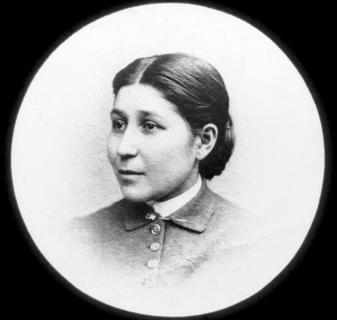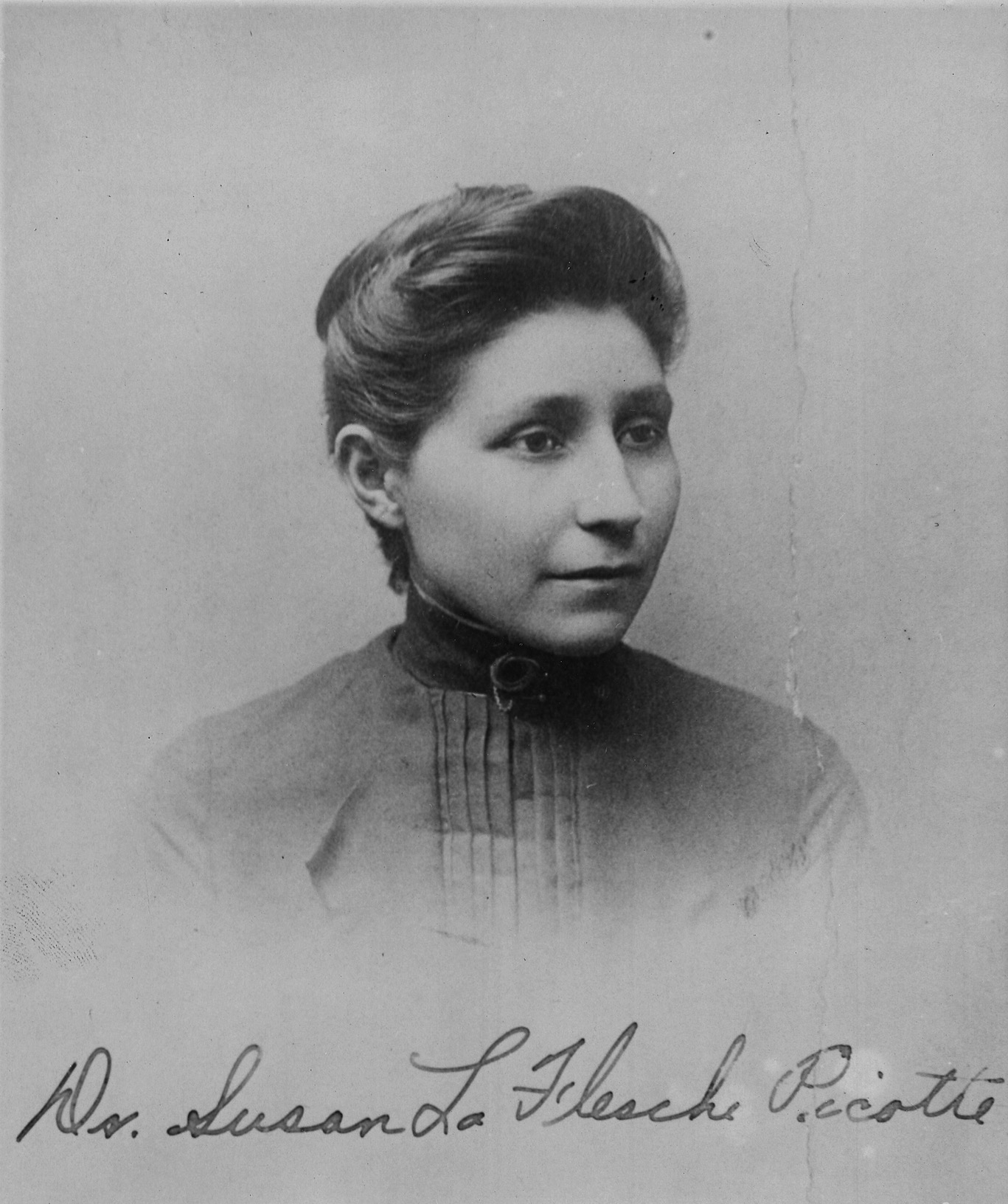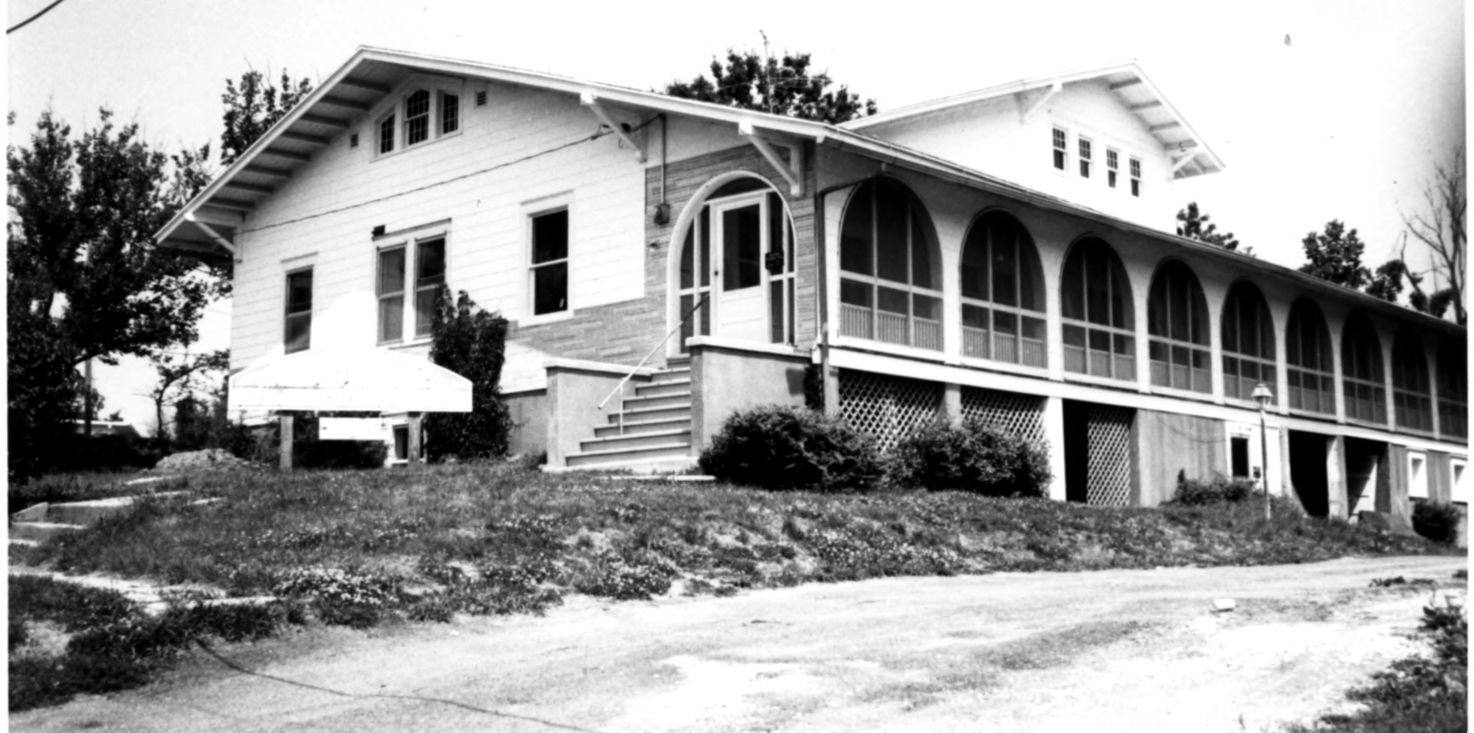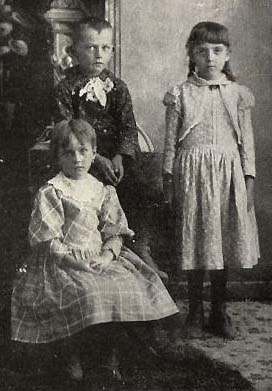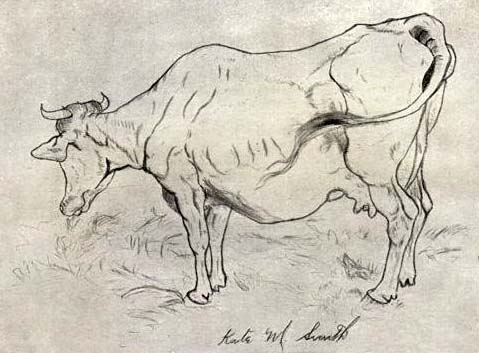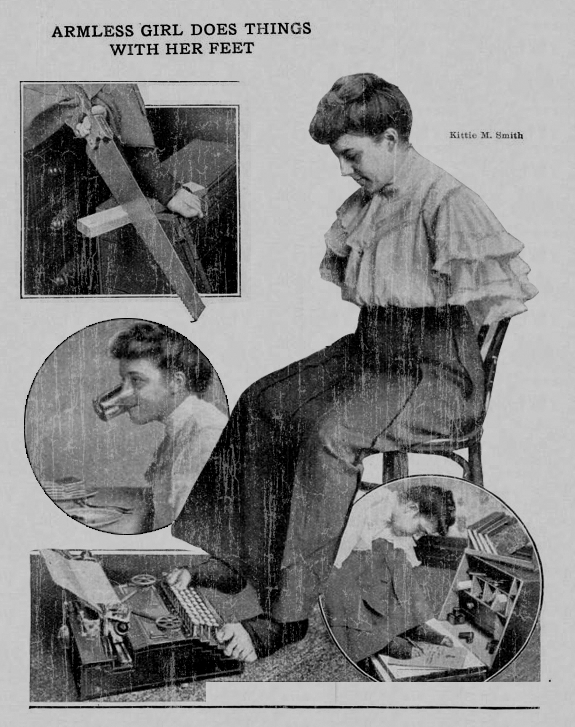Susan La Flesche Picotte – Doctor Between Two Worlds
This week I want to pay tribute to the medical workers of the world with an article about a doctor whose work spanned two worlds. Determined to provide adequate medical care for her community, she became the first Native American woman to hold a medical degree. But she wasn’t only a doctor! She helped out with financial issues as well as family disputes. Her name is Susan La Flesche Picotte and here is her story.
Born in 1865, Susan came into life already inbetween worlds. Her father Joseph became Chief of the Omaha Tribe little more than ten years earlier and had since been pushing for assimilation. In his opinion only adapting the traditional lifestyle to the changing world would save his people. By the time Susan was born, there was a schism in the tribe between the traditionalists and innovators. She and her three older sisters grew up in a log cabin instead of a teepee, but were still taught the traditional ways and the Omaha language, walking the fine line between cultures.
When Susan was eight years old, she witnessed the death of an elderly tribeswoman as the local, white doctor simply didn’t come to treat her. She would think back to that incident for the rest of her life and later remember it as the moment she decided to become a doctor. But first she needed to go to school. After attending school on the Reservation until she was 14, being homeschooled for a few years and studying in New Jersey for a while, she returned home to Nebraska at age 17 to teach at the local Quaker Mission School. It was there that she met Harvard anthropologist Alice Cunningham Fletcher who encouraged her to pursue a higher education and to fulfill her dream of becoming a physician. They would remain close friends and Alice would become somewhat of a mentor to our young heroine.
So Susan travelled East again. This time to Virginia, where she had enrolled at Hampton Institute, one of the most prestigious schools for non-white students in the US. There she met another woman to support her on her way, the resident physician Martha Waldron, who was a graduate of the Woman’s Medical College of Pennsylvania and urged her to apply to the school as well. With the help of Alice Fletcher, Susan was able to secure funds for a scholarship from the Office of Indian Affairs, likely making her the first person to receive aid for professional education in the US. The one catch was that she was forbidden from entering any kind of romantic relationship during her studies as well as a few years after to “allow her to fully focus on her practice.” It seems that she didn’t care that much though, or at least she never mentioned it, and so off she was, her dream within reach.
In 1889, after just two years instead of three, she graduated the WMCP with honors on top of her class and finally returned home to Nebraska to become the physician for the Omaha Agency, operated by the Office of Indian Affairs. Quickly people began flooding in. As you might have deducted from the incident with the old woman back when Susan was still a child, the medical care at the reservation was bad. Many tribespeople were sick with cholera and tuberculosis and many came to her for help in other matters as well. She became more than just their doctor, she was a lawyer as well as a priest and accountant to them. So many insisted to be treated by her, that her white partner quit, leaving her solely responsible for the medical care of over 1300 patients in a 450 square mile area.
Susan wasn’t easily deterred though. While she was dreaming to build a proper hospital someday, for now she was making house calls on foot, often taking hours to reach just a single patient, risking her life in the process. Although she did eventually upgrade to a horse and later a buggy, things improved only slightly. She had always been suffering from chronic illness and already had to take a break in 1892 due to chronic pain and another one a year later after a fall from her horse left her injured. Since then her hearing worsened continuously. In addition to all that, some of her patients kept rejecting her diagnoses and questioning her knowledge. Again Susan didn’t even think about giving up though and kept advocating for changes in sanitary routines and against alcohol. She was quick to realize the damage that living in a white world did to her people and saw that changes had to be made in order to survive. And she was determined to bring about these changes.
But first she fell in love. In 1894 she met Henry Picotte, a Sioux, and they married the same year. The couple settled in Bancroft on the Reservation and Susan opened her own little practice there, making no difference between the ethnicities of her patients. One or two years later their first son Caryl was born and two or three years later the second one, Pierre, arrived. After giving birth (and presumably resting for a little while) Susan continued to work, relying on her husband to take care of the family and household. We are in Victorian times, mind you, this was incredibly unusual! Shortly before her death she would even get to build the hospital she always dreamed of, but more on that later.
For more than 25 years Susan would work tirelessly for better medical care and illness prevention for her people, advocating for the use of screen doors to keep the flies out, for better sanitation and most of all against alcohol. She had recognized the growing numbers of people with tuberculosis which can be directly traced back to alcohol consumption. She also witnessed first- hand the white whiskey peddlers and how people pawned clothes and even land just to get more to drink. Even her husband slipped into alcoholism and would eventually die from tuberculosis in 1905. She saw her people suffering and she saw alcohol as the culprit – at least the culprit she could do something against. And she did.
In the 1890s she ran a campaign to enforce prohibition on the reservation which failed, partly because many Omaha people were illiterate at the time and liquor dealers were handing them ballots against prohibition and/or bribed them with alcohol. Finally in 1897 a law was introduced that outlawed trading alcohol against land …however it proved impossible to enforce.
For the rest of her life, Susan would continue this fight but never truly get rid of the problem. But she did have some success in fighting for her people’s land after all! You see, the land of the Reservation was held in trust by the government at the time, so it didn’t truly belong to the Native Americans even though they had lived there for ages. Her first brush with bureaucracy was when her husband died and although he left the land to her and their children, there was no other adult man to legally take the land and it was all very complicated. But after a series of quite infuriated letters over the course of three years, she did get to inherit her land and sell some of it (which was a whole other can of worms because technically it still wasn’t her land – the trust-thing, you remember – but yeah, she managed.) Soon others came to her because they had similar problems and she quickly had established a side-gig in addition to her doctor’s work. And raising two kids. And campaigning against alcohol. In 1907 she moved her family to Walthill. Gosh, where did she take the time?!
Anyways, she helped people with their inheritances and land sales and at some point she realized there was a circle of men, both white and Omaha, who cheated minors out of their inheritances and thus out of Omaha land. After campaigning for her tribes right to their land for years she now suddenly wrote to the Office of Indian Affairs that the Omaha people needed the continued guardianship of the state. Yes, I was just as confused as you probably are, but it’s actually quite a smart plan. Susan accused the OIA of the lack of business skills of her people and held them accountable for minors under their guardianship losing their land to fraudsters and reminded them of their duty to protect the Native Americans. Simultaneously she chastised them for having treated her people like children since the beginning which was the whole reason for this mess. The plan kinda backfired though and in the end the Omaha became even more dependent on the OIA and lost even more land, if not to fraudsters.
But even though many of her endeavors ultimately failed, she did make illness prevention and proper health care available to her people. And one more thing: Remember that hospital I talked about earlier? In 1913, two years before she died from bone cancer, her dream of opening a hospital for her community finally became reality – completely funded by the community through her tireless crowdsourcing (she did ask some rich people too.) Even though she was gone, the hospital remained operational well into the 1940s and the building still exists today!
image credits:
1: “Susan La Flesche Picotte, M.D.” – National Anthropological Archives, Smithsonian Institution (54752), via the Changing the Face of Medicine Exhibition – Link
2: “Susan La Flesche Picotte”, 1889 – Woman’s Medical College of Pennsylvania Photograph Collection (ACC-AHC1) Item Number p0164a, via iDEA by Drexel University Libraries – Link
3: “Susan La Flesche, early 1900s, when she returned to the Omaha Reservation” – National Anthropological Archives, Smithsonian Institution (54752), via the Changing the Face of Medicine Exhibition – Link
4: “Picotte, Dr. Susan, Memorial Hospital”, National Register of Historic Places Collection (88002762) via National Park Service Gallery – Link

